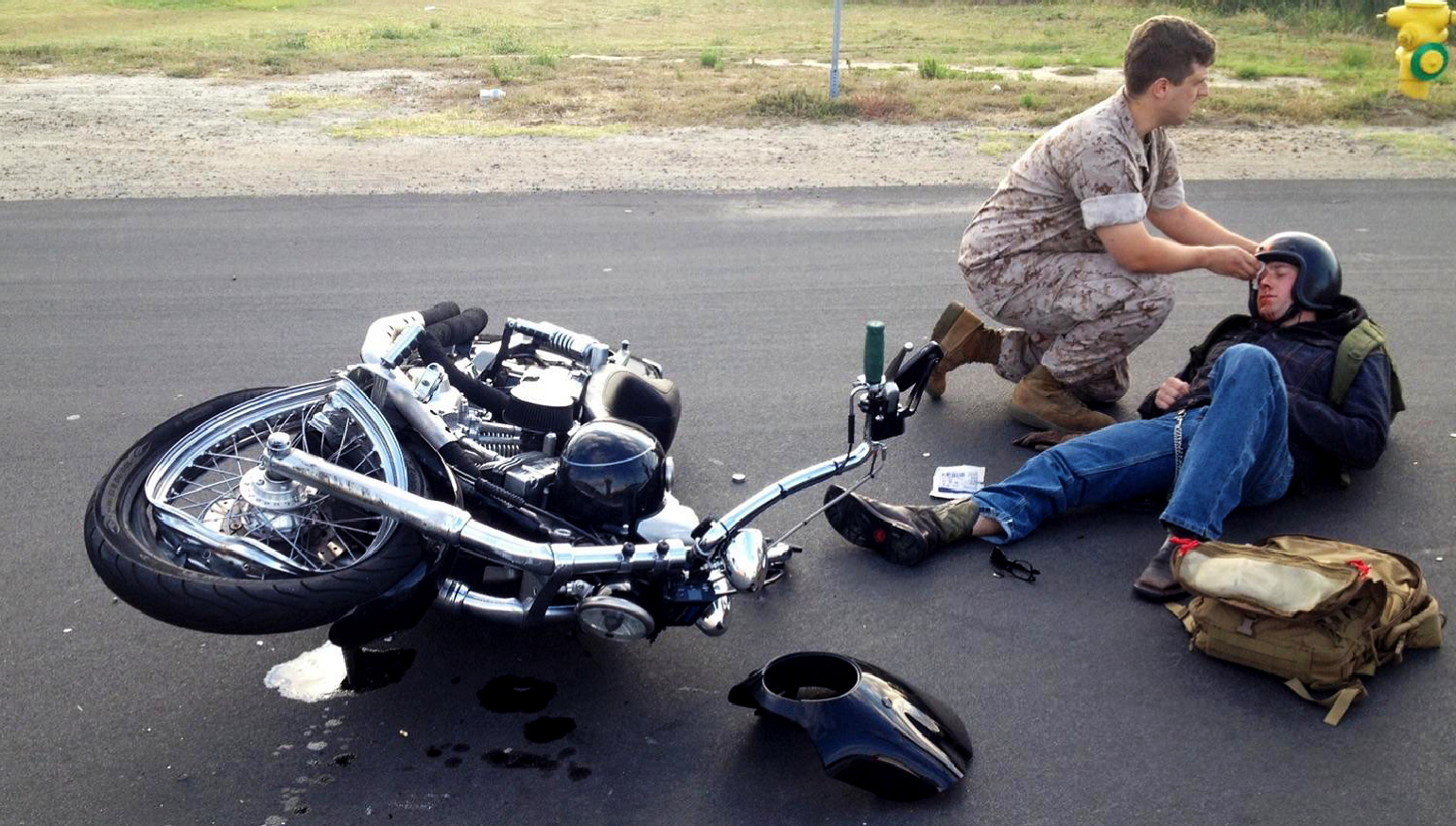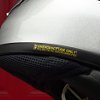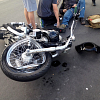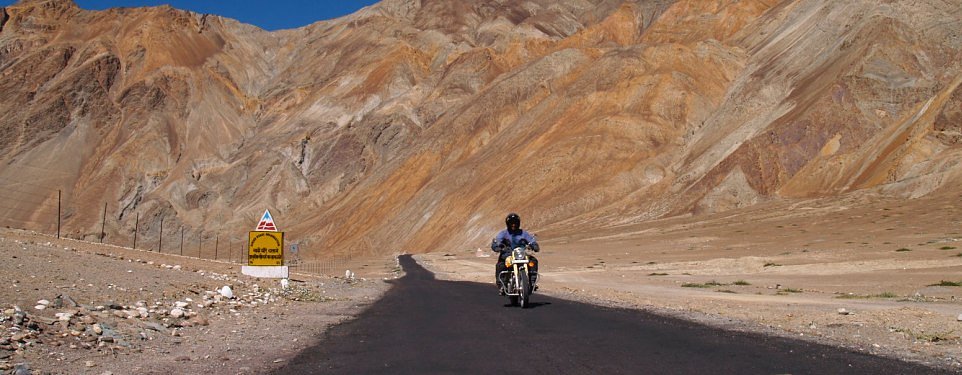The motorcycling community is spectacular at providing aid to those in need, from charity rides to videos of riders rescuing dogs or cats. But what do you do when you come upon a crashed rider? The skills you need may not be intuitive, despite your desire to help.
Here are some basic guidelines on what to do (and what not to do) until skilled help arrives. (And there are ways for you to acquire those skills should you desire.) The rest of this piece will focus on those who are not conscious, as well as those who are but who cannot move or help themselves. We will assume that the person you come across is also alive; it is truly rare to be able to successfully resuscitate someone who has died at the scene after a blunt injury.
Let’s get started — right after someone else has abruptly stopped. Whether you get instruction from the American Red Cross, the Federal Emergency Management Agency (FEMA), or any military branch’s medical service, Rule Number One is to maintain your own safety. Seems a little bit counterintuitive, since rescuing people always has some risk, but the core of Rule Number One makes sense as it keeps you from creating another victim in need of rescue or care.
OK, now what? There are a few priorities after finding a downed rider(s) that relate to keeping them alive, regardless of whether help is going to arrive rapidly or not. First, call for help! Try not to get distracted by visually graphic injuries — it's a challenge — because focusing on the dramatic will delay obtaining trained help. Tell the dispatcher where you are, what has happened, and how many people are involved. All of this helps them know how many ambulances to send, and depending on your description, sometimes what kind (basic versus advanced life support versus air ambulance) to dispatch.
You need both yourself and the victim to be safe, whatever you are going to do. If the bike is on fire or the injured person is lying in the roadway, the person must be moved to keep both of you as safe as possible. Visibility is essential! I recommend keeping your bike headlamp on and directed to where you will render aid, especially at night. Leaving your lights on and activating your flashers helps traffic from both directions see that something is not right; they might even stop to help. If you have flares (or they do), plant them; or have your passenger, buddy, or anyone else who has stopped do it.
How should you move someone? Carefully, of course! Your goal is to try and keep the person's spine aligned while moving to safety. Hard to do alone, and a definitive guide of how to do it in every circumstance is nearly impossible (especially with Lance’s word limitations). Things that slide help you, so leave the injured person's gear and helmet on (if present) for your move.

Once you are both in a safe position, the major thing you can do is to stop the bleeding! It is a chief cause of preventable death prior to reaching a hospital. There are structured courses you can take that run under the heading of “Stop The Bleed” that teach you specific skills. If you do not have that training, direct pressure is an excellent technique. If the victim is bleeding from an arm or a leg, a tourniquet works well. Are you covered under the Good Samaritan act while you help? Yes! Please note that if the person you find is not breathing, odds are that he or she has suffered a catastrophic event and rescue breathing is unlikely to work, except in very, very few circumstances.
Controlling the environment helps keep people alive. Keeping someone warm is important when it is cold, as hypothermia makes it hard for your blood to clot. Consider positioning your bike near them with the engine running to help provide local warmth or block wind. If you have a blanket you are willing to sacrifice (or any other heat insulator, like a sweater, etc.), drape it over the person. Keep on your own insulating layers so you do not become hypothermic. If your gear gets soiled, you are not likely to put it back on for the rest of your ride and the EMS crew isn't carrying spare gear for you, either! Unless it is excessively hot, or the victim has been burned, avoid cooling an injured person.
Other things a lay person may reasonably do are straightforward and principally relate to whether the injured person can talk to you. If the person cannot talk to you, you can:
- Feel for a pulse at the neck, and watch or feel for chest rise to indicate that he or she is still breathing; if neither is present, the victim is likely dead (yes, the EMS experts in the crowd will note that if the person has bled a lot, or is really cold, a pulse might be hard to detect, and chest rise is hard to determine on someone wrapped in gear).
- If you are trained in CPR and you do not feel a pulse, CPR may be lifesaving. While CPR for blunt-trauma-caused death works really poorly, sometimes people crash from having a heart attack and CPR works much better if this is the case.
- Look for identification in a wallet, an ID band, or necklace.
- Look for a phone that has an ICE (In Case of Emergency) feature.
If the person can talk to you, there is no guarantee he or she will still be able to do so when EMS arrives. Answers to these questions can provide vital information that helps guide care en route to the hospital:
- Obtain a name, address and contact information.
- Determine if any medication is being taken.
- Determine if he or she has any allergies to medications or latex.
- Find out when the person last ate or drank (anything, not just alcohol).
- Ask if anyone else was on the bike who is not present (sometimes another person is in a ditch or went over the side of the road and needs rescued, too).
- Finally, you can help by providing human contact and reassurance that help is on the way.

What you should not do:
- Do not remove a helmet unless it is absolutely necessary to stop bleeding, to extricate the person from somewhere, or it is creating an unsafe situation (for example, it is covered in fuel). If you do need to remove a helmet, check for emergency release tabs that free the cheek pads to make helmet removal easier. Remember to release the chin strap first!
- Have the person sit up or walk around.
- Remove an impaled object.
- Remove gear unless absolutely necessary to control bleeding.
- Give the person anything to drink.
- Give any medications you happen to carry for pain.
- Sew anything closed.
- Try to relocate a dislocation.
- Straighten fractures.
- Any creative maneuvers you saw on a TV medical show.
The lists above are, of course, incomplete and should instead serve as a general guide that is aided by your own common sense. Like many tools, it's best to be prepared to use them and then hope you never need to.










